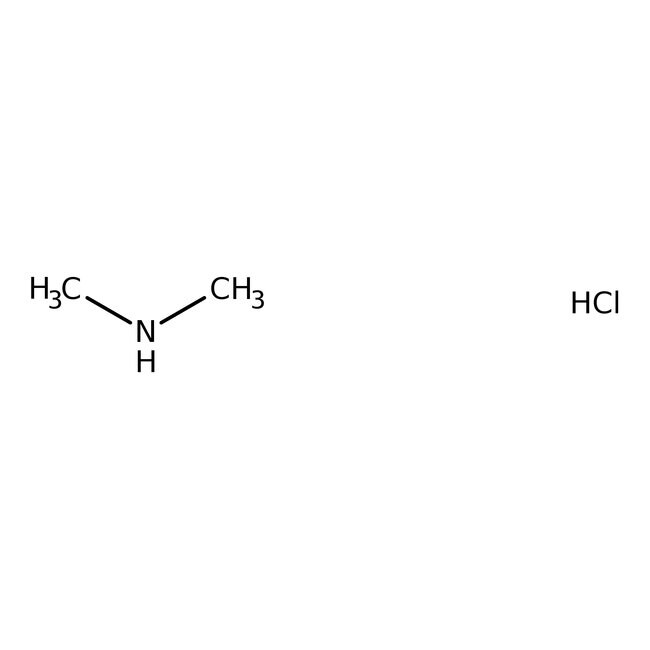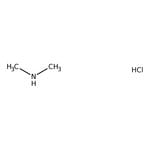Search Thermo Fisher Scientific
Diméthylamine hydrochloride, 98+ %, Thermo Scientific Chemicals



Diméthylamine hydrochloride, 98+ %, Thermo Scientific Chemicals
Identifiants chimiques
Spécifications
Description
This Thermo Scientific Chemicals brand product was originally part of the Alfa Aesar product portfolio. Some documentation and label information may refer to the legacy brand. The original Alfa Aesar product / item code or SKU reference has not changed as a part of the brand transition to Thermo Scientific Chemicals.
Le chlorhydrate de diméthylamine est utilisé comme intermédiaire dans la fabrication de produits pharmaceutiques comme la ranitidine et la metformine, le tramadol et l’amlodipine. Il est utilisé comme précurseur de l’atrazine. Elle est associée à l’acétate de sodium et utilisée pour réaliser la réaction Willgerodt-Kindler pour préparer les amides. Sa base libre réagit avec le disulfure de carbone pour obtenir le diméthyldithiocarbamate qui est utilisé dans la vulcanisation du caoutchouc. Il est impliqué dans la synthèse de la diméthyl-1-méthyl-pyrrol-2-ylméthyl)-amine en réagissant avec la pyrrole de 1-méthyle et le formaldéhyde.
Solubilité
Soluble dans l’eau, l’alcool et le chloroforme
Remarques
Hygroscopique. Garder le récipient bien fermé dans un endroit sec et bien ventilé. Incompatible avec l’agent oxydant.
Figures
Documentation et téléchargements
Certificats
Foire aux questions (FAQ)
Citations et références
Sécurité et manipulation
Classification of the substance or mixture
CLP classification - Regulation(EC) No 1272/2008
Label Elements
Signal Word
Warning
Hazard Statements
H302 - Harmful if swallowed
H315 - Causes skin irritation
H319 - Causes serious eye irritation
Precautionary Statements
P280 - Wear protective gloves/protective clothing/eye protection/face protection
P301 + P330 + P331 - IF SWALLOWED: rinse mouth. Do NOT induce vomiting
P302 + P352 - IF ON SKIN: Wash with plenty of soap and water
P305 + P351 + P338 - IF IN EYES: Rinse cautiously with water for several minutes. Remove contact lenses, if present and easy to do. Continue rinsing
P312 - Call a POISON CENTER or doctor if you feel unwell